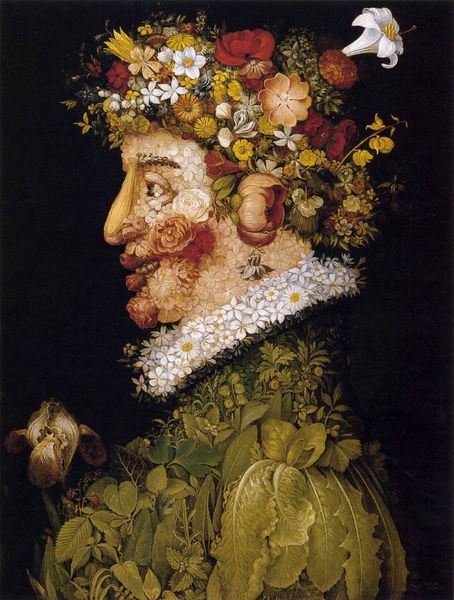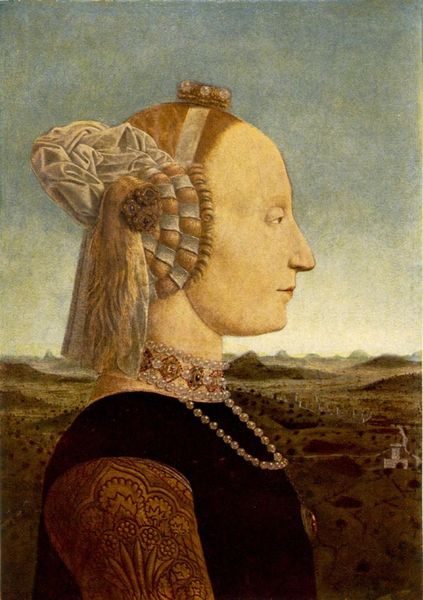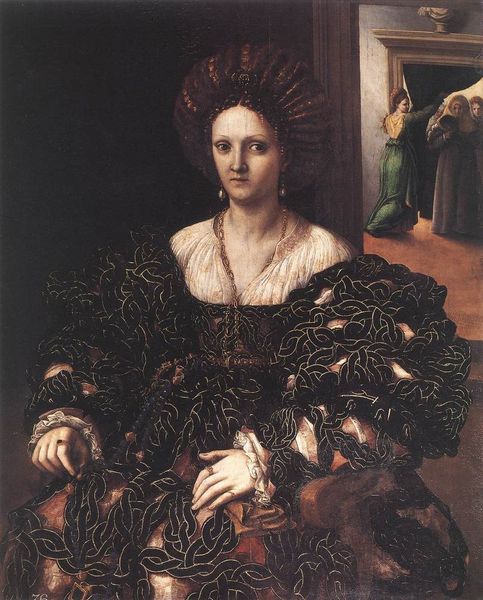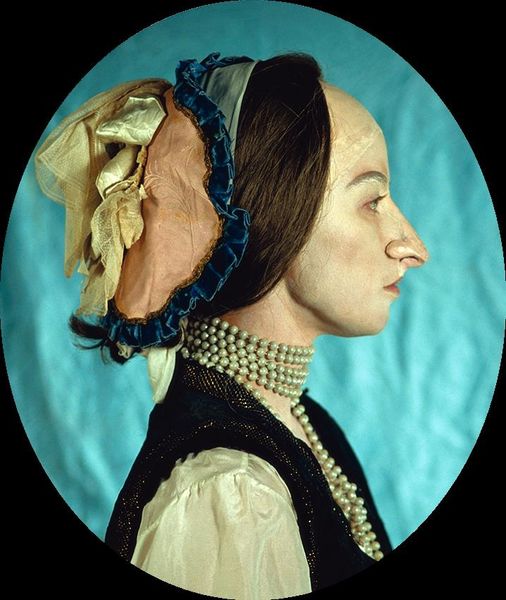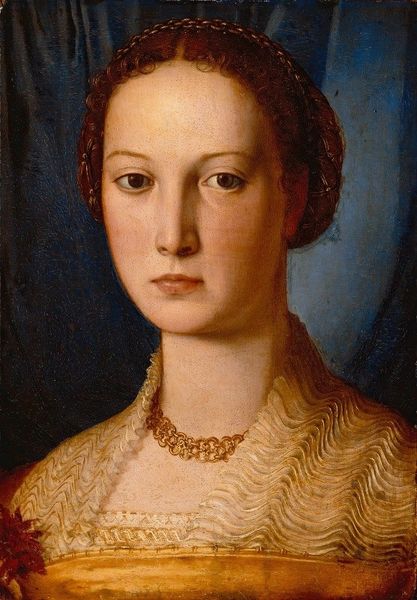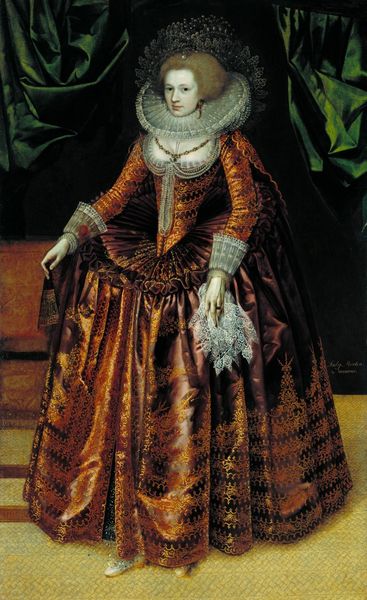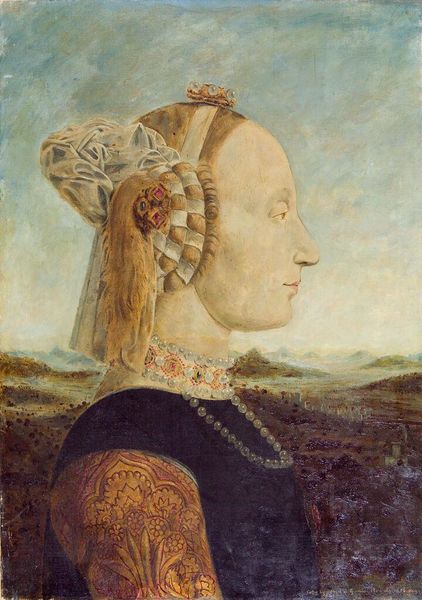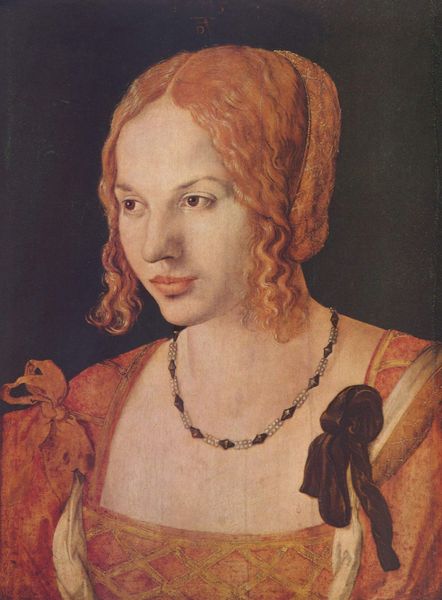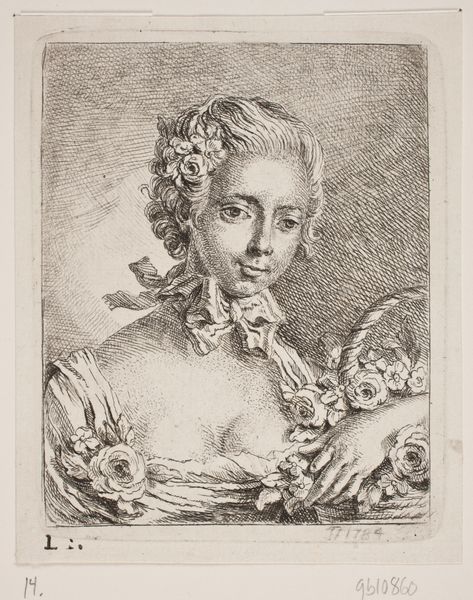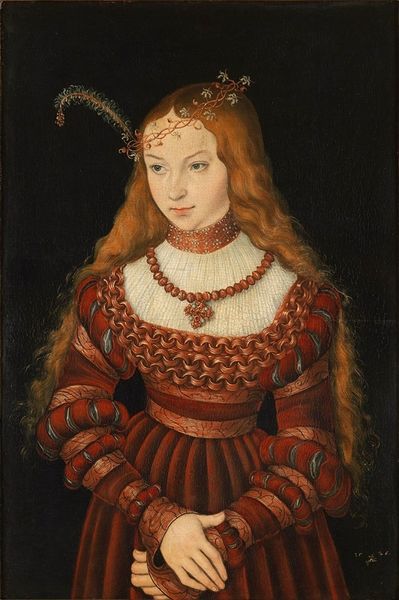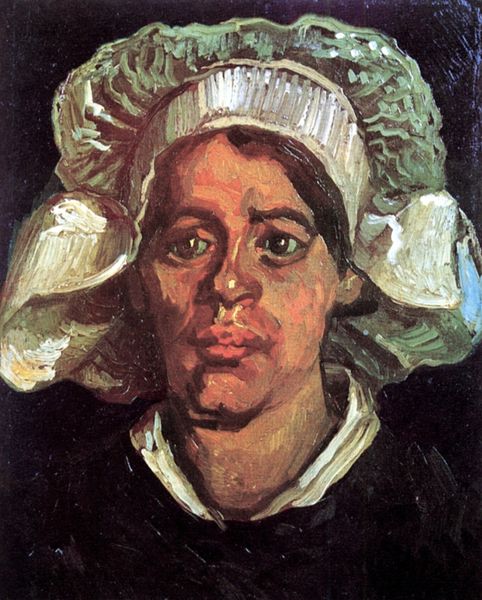
painting, oil-paint
#
portrait
#
allegories
#
self-portrait
#
allegory
#
symbol
#
painting
#
oil-paint
#
flower
#
mannerism
#
portrait head and shoulder
#
plant
#
plant
Dimensions: 73 x 56 cm
Copyright: Public domain
Curator: Looking at "Flora" painted in 1588 by Giuseppe Arcimboldo is an exercise in Mannerist wit, don’t you think? A face, a body, entirely composed of meticulously rendered flowers. Editor: My first impression is frankly one of discomfort. It's undeniably striking, but the tight massing of blooms gives me a slightly unsettling sensation. Like something organic pushed beyond its natural limits. Curator: Absolutely! Arcimboldo operated within the Habsburg court, so it’s vital to contextualize his work politically. These composite heads were not just playful novelties, but potent visual allegories of the emperor’s power and abundance of nature. Think of it as early propaganda, or visual puns intended for an elite audience. Editor: Interesting point! So, is "Flora" specifically meant to flatter the Imperial family’s command over the natural world? Who, then, would have this portrait represented? We see themes in self-portraits represented here. Is this merely commentary, or does it promote harmful or exploitative beliefs of gender and identity? Curator: Indeed. Each flower likely had symbolic meaning understood at the time – though some interpretations are debated now. But read as a female personification of Spring, or Flora herself, the composition certainly promotes nature and earthly virtue under Hapsburgian rule. Furthermore, considering the cultural position afforded to the courts where these artworks where displayed in the first place is extremely helpful here. Editor: That’s a reading I find very productive, as the abundance feels deliberately cultivated, imposed even. So what are the implications then, of shaping nature into a controlled "portrait?" It’s artifice upon artifice. What I continue to find deeply disturbing and exciting here is exactly that tension and commentary you're pointing towards. I find this dialogue of the original painting fascinating, and its commentary on societal status exciting. Curator: Well, precisely! Arcimboldo presents a vision of controlled fecundity reflecting specific social hierarchies and the symbolic currency operating within them. Editor: The socio-political subtext complicates, perhaps even subverts, the surface-level appreciation of its beauty. Thanks for elaborating; I now realize the discomfort speaks directly to Arcimboldo's layered sociopolitical aims and cultural awareness.
Comments
No comments
Be the first to comment and join the conversation on the ultimate creative platform.

